
Cai Be, a small division of Tien Giang Province, is a perfect choice for those who never know about floating market but has only 1 day to visit the Mekong Delta area. At the floating market, large size boats anchor along the river bank waiting for buyers from in and around the town. Every boat has a long upright pole at its bow on which samples of the goods for sale are hung. The sellers mostly sell fresh fruits and vegetables which you can actually buy from them. You can also do some cycling around the town to visit local home-made workshops and learn how they make coconut candy, Vietnamese pop rice, rice paper, or local rice wine. In addition, Cai Be has some ancient houses which was built since French time where you can pay a visit, have a home-hosted lunch and enjoy some fresh fruits right from the garden.
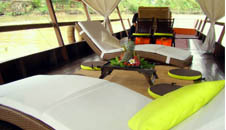
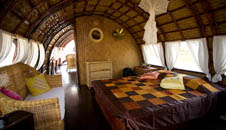
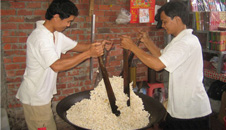

Can Tho is the largest city in the Mekong Delta and the fifth largest city in Vietnam. Most tourists visit this city for the famous Cai Rang Floating Market which is renowned as the biggest floating market in the Mekong Delta. This market is open all day and all year round except for the first 3 days of Tet Holiday. The best time to visit this market is from sunrise until about 9am. It is lively with the noises of the boats and the sounds of traders bargaining. Larger sized boats anchor and create lanes that make the waterway a maze of hundreds of boats. Weave between the boats and observe the villagers trading . The main items sold there are farm products and specialties of Cai Rang Town, Chau Thanh District and neighboring areas. Each boat has a long upright pole on which samples of the goods for sale are hung. Make sure you visithere before leaving Vietnam.


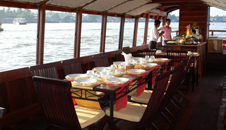
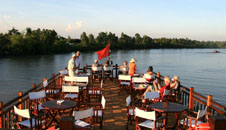
At 1,500m above sea level, Da Lat was originally the playground of the French. Today it is “The City of Spring”, as it has by cool, fresh air all year round. Many people call it ‘Le Petit Paris’ and the town even features a mini Eiffel Tower in its centre. In the city you’ll find many beautiful French colonial buildings whilst in the mountainous area, there are plenty of waterfalls and hill-tribe villages. Farms and fruit gardens can be seen everywhere. Fans of adventure activities will also love this place. Mother nature has been very kind to Da Lat surrounding the city with a huge variety of terrains. With trails and dirt tracks, pine forests and falls it makes a wonderful destination for great outdoor activities such as mountain biking, whitewater rafting, canyoning, or hiking. Another enjoyable option while in Da Lat is to take the cable car from Robin Hill to Truc Lam Zen Monastery, and look down the beautiful Tuyen Lam Lake, pine-forested valleys and vegetable gardens.

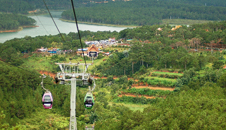
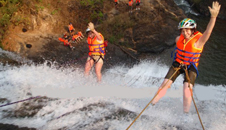
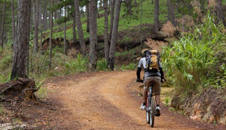
Da Nang is one of the major port cities in Vietnam and the biggest city on the South Central Coast of Vietnam. And Da Nang is considered as the commercial and educational center of Central Vietnam. Today, Da Nang is becoming a “hot destination” of domestic and foriegn tourists in terms of cleanness, safety and order, great beach resort.
With the stretch of smooth sand, its fresh atmosphere and blue water, Da Nang beach has been voted one of the six most attractive beaches on the planet by American Business Magazine Forbes. Also, the Australian Magazine, Sunday Herald Sun, ranked the 900m-long My Khe Beach in Da Nang in the top 10 Asian beaches.
There's more to Da Nang than just the beach, though. Da Nang boasts the excellent Cham Museum, which is a great primer for a visit to My Son further to the south. The city also has a large Cao Dai temple, a pleasant riverfront boulevard, and wide leafy boulevards. There are some good options for eating, drinking, and getting down in the evening, which are likely to expand as the city does. The immediate area includes attractions like Marble Mountain, Monkey Mountain, Son Tra Peninsula and the Ba Na Hill Station.
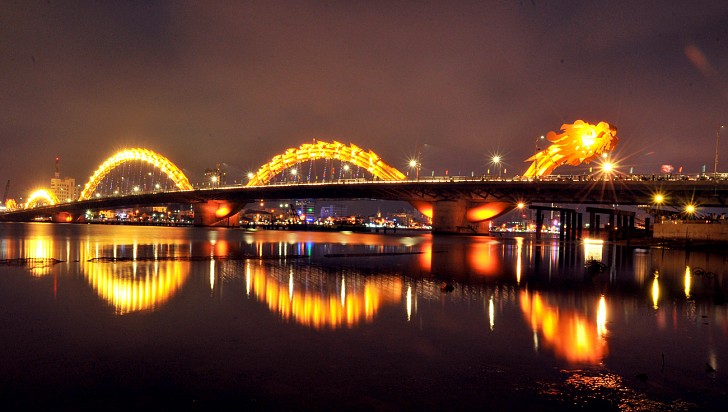
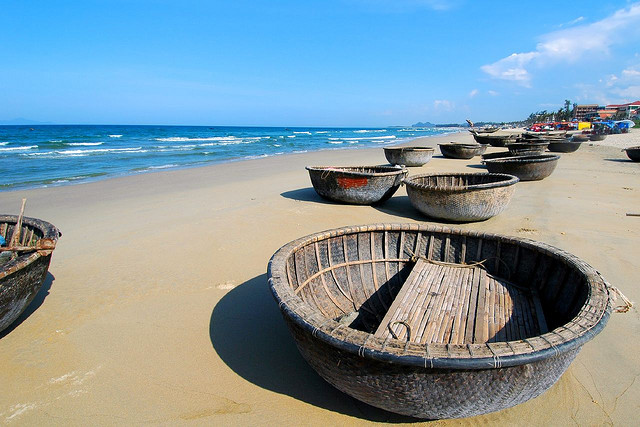
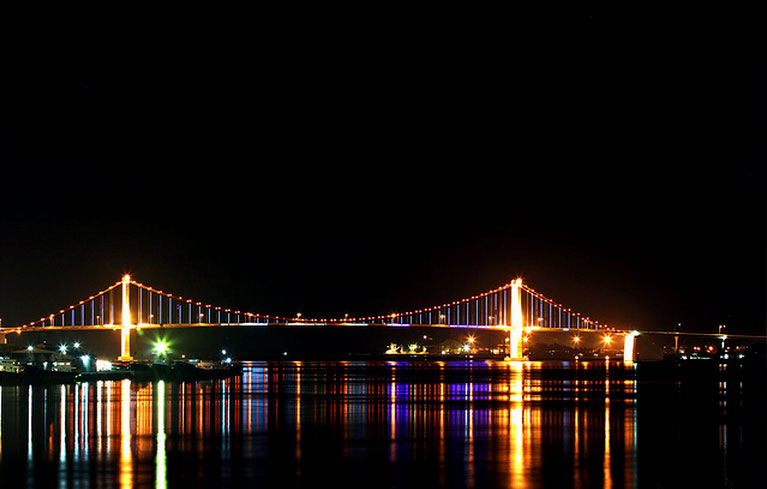
A visit to the north is incomplete without experiencing the spectacular views of more than 3,000 limestone karsts in Ha Long Bay. Declared a World Heritage Site by UNESCO in 1994, Ha Long Bay is sculpted into strange shapes by the wind and weather. The karsts hide deserted beaches, many magnificent caves, and secluded lagoons that cay only be reached by chinks in the cliffs at low tide. The most fascinating way to fully enjoy Ha Long Bay is to join an overnight cruise. Boats vary from large vessels that can carry up to over 60 passengers through to small wooden junks for private groupsandfamilies. There is a wide range of entertainment available on board, such as Tai Chi, kayaking, squid fishing, which should certainly satisfy all your expectations.
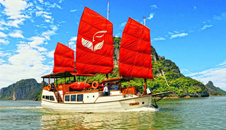
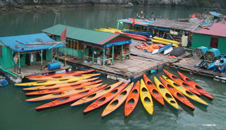
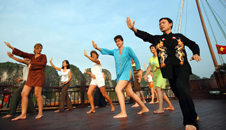

Said to be the quintessential city of Vietnam. It is a millennium-old capital of quaint pagodas, beautiful architecture and a labyrinth of narrow streets. Ha Noi is a mix of a busy modern life and sustainable values preserved for generations. Ha Noi nowadays has become extremely attractive to tourists thanks to its rich culture and history. Around Ha Noi, there are still many traditional handicrafts villages such as Bat Trang Pottery and Ceramic Village and the Dong Ho Painting Village. Many of them are centuries old, and are famous for their hand-made natural products. You can make your own souvenirs at the Bat Trang Pottery and the Ceramic Village - a fascinating experience. In Ha Noi, there are plenty of pagodas (Tran Quoc Pagoda, One-Pillar Pagoda, etc.), museums (Ho Chi Minh Museum, Ethnology Museum, etc.) and attractions waiting for you to explore them. All can be combined in a single city day trip. Ha Noi also offers some of the world’s greatest street food; sign up in a street food tour and you will get insight into Ha Noi's street cuisine. Another must-do activity while in Ha Noi is to wander through the 36 Streets of the Old Quarter for either shopping or a photo shoot. Afterwards enjoy a glass of "Bia Hoi"(draught beer) along with some local street foods, or relax and enjoy a traditional water-puppet performance at Thang Long Theatre (a uniquely northern Vietnamese art form) that will amaze you.
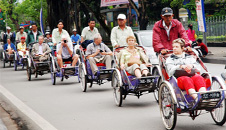
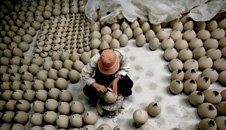
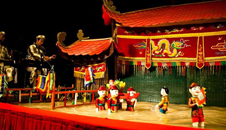
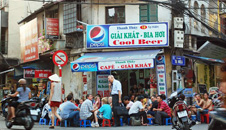
Once affectionately called The Diamond of the Far East, Ho Chi Minh City is now the most populous city in Vietnam. Modern office skyscrapers, amidst Chinese style pagodas and food stalls create a dynamic urban area. Whilst Ha Noi is the center of government, Ho Chi Minh City is the nation’s economic heart. Historic architectural highlights include the Notre Dame Cathedral, the Old Saigon Post Office, the Opera House and the Reunification Palace, and the ghosts of war can still be found haunting the War Remnants Museum. Exploring the city and surroundings by Vespa is exciting option as you blend riding in the chaotic traffic and eating delicious street food, with saying "Dzo" (Cheers) with local people. For romantic moments, a dinner cruise is always a good choice. Tourists coming to Ho Chi Minh City should not leave without paying a visit to Cu Chi Tunnel and the Cao Dai Temple. A great combination of a legendary network of 250km man-made underground tunnel with a unique local religion, known as Caodaism, in a single day tour will thrill you.

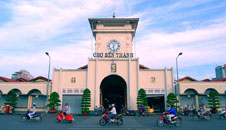
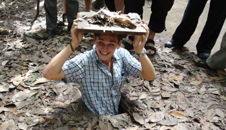
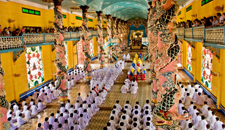
Hoi An is an exceptionally well-preserved example of a South East Asian trading port, dating from the 15th to the 19th century. In 1999, this riverside town was listed as a UNESCO World Heritage Site in an effort to preserve its core of historic architecture and a unique mix of Vietnamese, Chinese, Japanese, and European styles. Lounge bars, boutique hotels, travel agents and a glut of tailor shops are very much part of the scene here. The city of Hoi An is one of the quietest in Vietnam. Cars are not allowed in the main streets, so most visitors come to Hoi An take a walking tour, visiting some of the town's major sights such as the 400-year-old Japanese Covered Bridge; the Assembly Hall of the Chaozhou Chinese Congregation,etc. In Hoi An, biking is a must-do activity regardless of your level of fitness. Leave the city behind for a glimpse of the beautiful remote countryside villages. Other sightseeing activities on offer are scuba diving or snorkeling at Cham Island, a rowboat trip on the Thu Bon River to the handicraft villages of Kim Bong (carpentry) or Thanh Ha (pottery), or a half day excursion to My Son sanctuary, a UNESCO World Heritage Site, a great sample of the ancient Champa civilization located in the southern part of Vietnam.
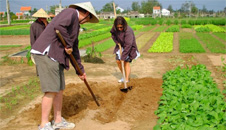
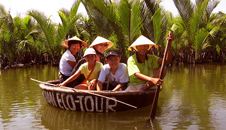
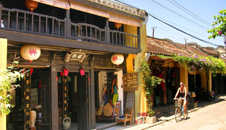
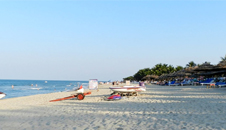
Recognized as a UNESCO World Heritage Site, Hue's complex history has earned it a reputation as a political, cultural and religious centre of the country. Today Hue still resonates with the glories of imperial Vietnam, even though many of its finest buildings were destroyed during the American War. Vietnamese food is delicious and healthy. Hue is famous for its unique royal and vegetarian cuisine, as the city was once the capital of Vietnam and the cradle of Buddhism in Vietnam. There are plenty of activities to do in Hue. For those interested in history and architecture, spend few hours to explore the Citadel and visit the Emperor's Tombs. For those who love the beauty of nature, take a dragon boat trip on the romantically named Perfume River to Thien Mu Pagoda standing on the riverbank with its seven-storey tower. The dinner cruise and night boat trips usually feature live folk music. Although Hue is not strictly a coastal city, beach lovers will not be disappointed as there are several good beaches like Thuan An, which are only30 minutes away from the city center.

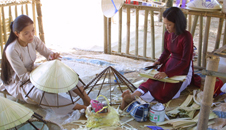

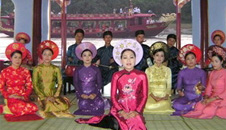
Mui Ne is renowned for its beautiful beaches gently sloping to the sea, pure sea, blue sky, and pristine reddish sand dunes. These make it the perfect destination for a beach break vacation. There’s no scuba diving or snorkeling to speak of, but when Nha Trang and Hoi An get the rains, Mui Ne gets the waves. Thanks to the strong sea breezes,Mui Ne is now a paradise for kite and wind surfing. If you haven’t tried either sport before, don’t worry, there are plenty of surf-schools available on the beachthatcan help you to master the waves at your own pace. There are also two fascinating spots to check out; the white and the red sand dunes. It is best to plan your trip here early in the morning or late in the evening when you can catch a splendid sunrise or sunset view over the dunes. The Red Dunesfeatures reddish-brown sand that make them a more spectacular place for photography. The smaller White Dunes are easier to reach. Sand-sledding is a common (and fun) activity here. Visitors can rent plastic sleds but it is a good idea to check the price and agree on it beforehand.



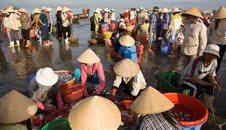
A pristine village area with a pure ecological environment, created by the green of coconut tree lines and large fruits gardens, has made Ben Tre a precious green ecological complex in southern Vietnam. Everywhere is green. Pure rivers meander in between rows of trees. This is also a great place to arrange boat trips as the area has a complex river system, passing through many villages. Ben Tre boasts a unique specialty; coconut products which are available at coconut gardens. Examples are coconut candies, coconut oil, coconut quintessence, etc, from which about 50 dishes can be made.
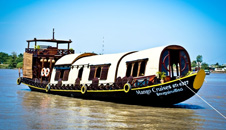
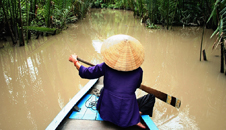
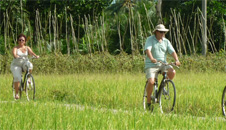

Considered Vietnam’s most famous seaside resort-town, Nha Trang attracts foreign tourists for not only its stunningly pristine beaches but also the urban atmosphere of a young tourist city. With diversified kinds of tropical fish and its colorful coral reef, Nha Trang is one of the best spots for scuba diving and snorkeling in Vietnam. There are a variety of other water-based activities such as parasailing, canoeing, banana boat riding or squid fishing at night for your entertainment. Biking is also a good way to relax and explore the countryside around Nha Trang. Different biking tour programs from easy to medium are available to suit all levels of fitness. For more fun and relaxing, immerse yourself in a natural hot mineral and mud bath at the I-Resort Hot Springsor just lay on the sandy beachDon't forget to try freshly caught lobster since seafood is one of Nha Trang's many highlights.
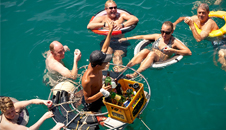
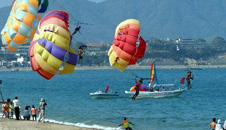
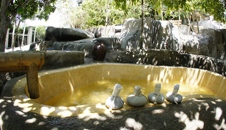
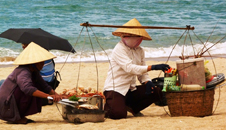
Located at the southern end of the Red River Delta, it has royal ruins, limestone mountains and a system of caves and rivers. Ninh Binh Province has nearly everything a visitor could want. This province was developed as the cultural and political center of Vietnam during the reign of Dinh Tien Hoang King in 968 as the ancient capital of Vietnam in the 10th century. A boat trip along a crystal clear river from Trang An’s Ecotourism Center through dark grottoes and sweeping mountains will impress you. For ecotourism and animal lovers, a biking trip from Trang An to the nearby Cuc Phuong National Park can be arranged.

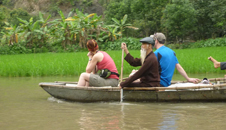
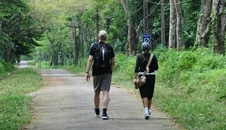
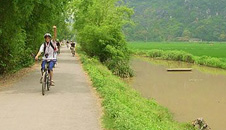
Phu Quoc is the biggest island in Vietnamand it is famous for its pristine beaches. "Long Bank" ("Bãi Dài") is one of the most beautiful beaches on the island and it is listed in the "World Hidden Beaches". It is most beautiful from October to March. With its fresh sea breezes and stunning sandy beaches touching crystal clear blue waters, Phu Quoc beach is truly a paradise for swimming, sun bathing and scuba-diving.. Pay a visit to Ham Ninh fishing village and watch the daily fishing routine of the locals. You will also have the chance to enjoy the unique aromatic flavors of Phu Quoc fish sauce at a traditional fish sauce factory. You will be amazed at the sight of dozens of bulky barrels being lined up and waiting to be jammed with fresh fish. Another special spice of Phu Quoc is high quality black pepper, an agricultural product of the local traditional craft villages, sold around the world. Phu Quoc is home to a native breed of dog. They were originally a wild animal and later trained as a hunting dog by local people. These days they are very domesticated and it's unusual to go anywhere on the island without seeing one of these dogs.

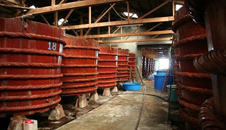


The mountainous town of Sapa is a destination of cultural authenticity and natural tranquility. Being one of the most attractive tourism destinations in the country, Sapa is a precious gift that Mother Nature dedicated to Vietnam. It is the home of a great diversity of ethnic people, including the five main groups of Hmong, Yao, Tay, Zay and Xa Pho. They do not live in a central area but in hamlets scattering in the valleys throughout Sapa District. Trekking is the most common way to explore the area as you can get close to the ethnic minorities’ villages and their daily activities.

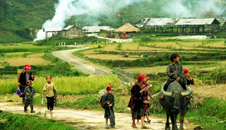
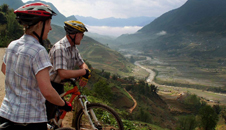

Yes, most nationalities will need a visa to enter Vietnam; however passport holders from UK, France, Italy, Spain, Germany, Norway, Sweden, Denmark, Finland, Russia, Japan and South Korea can enter Vietnam visa-free for 15 days or less. All other nationalities can apply for a tourist visa at any Vietnamese Embassy or Consulate in your home country. Alternatively, we can pre-arrange a “visa on arrival” or contact our Travel Specialists for further information. One last detail to note: your passport will have to be valid for six months after the end of your holiday in Vietnam.
Vietnam is a very long country that spans roughly 15 degrees of latitude, and the climate differs from the north to the south. In the north, it tends to be cool from November to March, warm and dry from March to May, and rainy from June to October. The hottest time of year is June to August.
Vietnam’s central region, from around Hanoi to Hoi An, can be subject to surprise showers year-round, but it tends to be mostly dry between February and September and bright, sunny spells are not uncommon. August is the hottest time of year, and October can be stormy with infrequent typhoons.
In the south, around the region of the Mekong Delta, temperatures are a bit more predictable. It stays dry from December to May, and it rains from June to November in short, daily downpours. It does get hot and humid in the south, with temperatures reaching 40 degrees Celsius (100 degrees Fahrenheit) from March to May.
This depends on what part of Vietnam you’d like to travel to, but we love Vietnam in all its climates and attitudes. We at Backyard Travel believe there is no ‘wrong’ time to go to Vietnam. However, as a general rule, temperatures and sunshine tend to be at their most pleasant from October to March, though northern Vietnam can be quite cool, and even cold, during these months. There are also cultural events and festivals year-round, with the biggest, Vietnamese New Year (Tet), falling in February. To find out what time of year would be best for the perfect trip to Vietnam, contact one of our Vietnam-based Travel Specialists.
If you’d like to veer off the beaten path in Vietnam, you won’t have far to look. North of Hanoi, one of Vietnam’s main entry points, is the rugged and remote region of Ha Giang. Few tourists venture here, but it offers some of the most beautiful scenery in Vietnam. This region’s terraced rice paddies are home to many Vietnamese hill tribes who lead fascinating lives steeped in tradition. We offer customized Vietnam homestay tours that give you a chance to mingle and stay with the local White Thai, Hmong, and Dao people.
Or, perhaps you’d like to see the Mekong—Southeast Asia’s lifeblood—from a different perspective on a Mekong river cruise. Or take a jaunt out of Ho Chi Minh City’s hustle and bustle to discover Sa Dec, a river port in the Mekong Delta that is home to the novel The Lover. Here, you’ll find neighborhood floating markets that you won’t find in the city, and we can arrange a homestay that will give you a true taste of local life. Just contact one of our local Travel Specialists who can customize a Vietnam tour off the beaten track just for you.
Certainly. Vietnam truly does have it all: this culturally and historically rich country boasts some of Southeast Asia’s most colorful and interesting cities, as well as white-sand beaches, quaint fishing villages, terraced rice paddies, karst topography, the UNESCO-listed Halong Bay, and one of the biggest cave systems in the world. And the food—just wait until you try it! The Vietnamese are also very child-friendly and welcoming of families. A family vacation in Vietnam promises a lot to experience and discover, and we can help you tailor a family-friendly trip to Vietnam that incorporates everything on your wish list.
You can purchase a local Vietnam SIM card nearly everywhere, including at the airport on arrival. They’re cheap and ubiquitous, and you’ll easily find SIMs with 3G, too. Four major mobile operators carry data plans: Mobifone, Vietnamobile, Vinaphone, and Viettel. A SIM card costs about 80,000 dong (US$3.50), and top-up credit is available as you go.
As a coastal country that is home to the vast Mekong Delta and many rivers, Vietnam offers numerous fantastic options for overnight boat trips. From the verdant karst islands of Halong Bay to the local floating markets of the Mekong Delta, there are plenty of ways to experience a Vietnam boat cruise.
Of course, Halong Bay, a UNESCO World Heritage Site, has some incredible options. We recommend a 2-night cruise or an overnight trip—we at Backyard Travel offer a relaxing overnight cruise, where you can soak in the Halong Bay sunset and participate in early-morning tai chi classes.
The Mekong offers the iconic, lazy river cruise as well as exciting river adventures with kayaking and other activities built in. Explore the river in a range of Mekong boat styles—your choice—from the deluxe boats that travel to Cambodia to the rustic cabins that ply quieter waters. Just contact one of our Vietnam-based Travel Specialists to have them customize a Vietnam boat cruise for you.
Although tipping in Vietnam is not generally practiced, you’ll want to tip your guide and driver at the end of each tour. We recommend tipping your guide about US$10 to $15 per group per day, and about $5 to $8 per group per day for your driver. If you’d like to tip the wait staff at a restaurant, we recommend leaving about 5 to 10% of the bill. Porters at hotels would appreciate about $1 per piece of luggage carried. However, remember that these are all rough guidelines and tipping hospitality staff other than your guide and driver is completely optional.
Internet access is widely available in tourist areas and big cities, which have many internet cafes. Internet access is less frequent in rural and remote areas.
Major credit cards are widely accepted by large shops, hotels and restaurants in Vietnam. However, they may not be accepted by smaller vendors such as small family restaurants, market stalls or in remote towns and rural areas. Make sure you carry enough cash for purchases, since credit cards aren't always an option everywhere in Vietnam.
ATMs are found widely throughout Vietnam, so withdrawing cash shouldn't be problematic in most areas. Some smaller villages and rural areas may not have ATM access, so prepare for this before venturing too far from a city or major town.
Absolutely. All passengers travelling with Far East Travel are required to purchase travel insurance before the start of their trip. Your travel insurance details will be recorded by your leader on the first day of the trip. Due to the varying nature, availability and cost of health care around the world, travel insurance is very much an essential and necessary part of every journey.
While the tropical climate lends itself to layered, breathable clothing all year round, if you are taking a tour in the North, cold winters mean you might need to bring a fleece or jacket.
Let's get in touch for casual conversation, inspiring experience, updates for all things travel
Ready to experience Southeast Asia at its best? We take the planning off you and hand you the keys to Asia. Drop us a line and we'll get back to you with expert, free, input within 24 business hours.
CLICK HERE